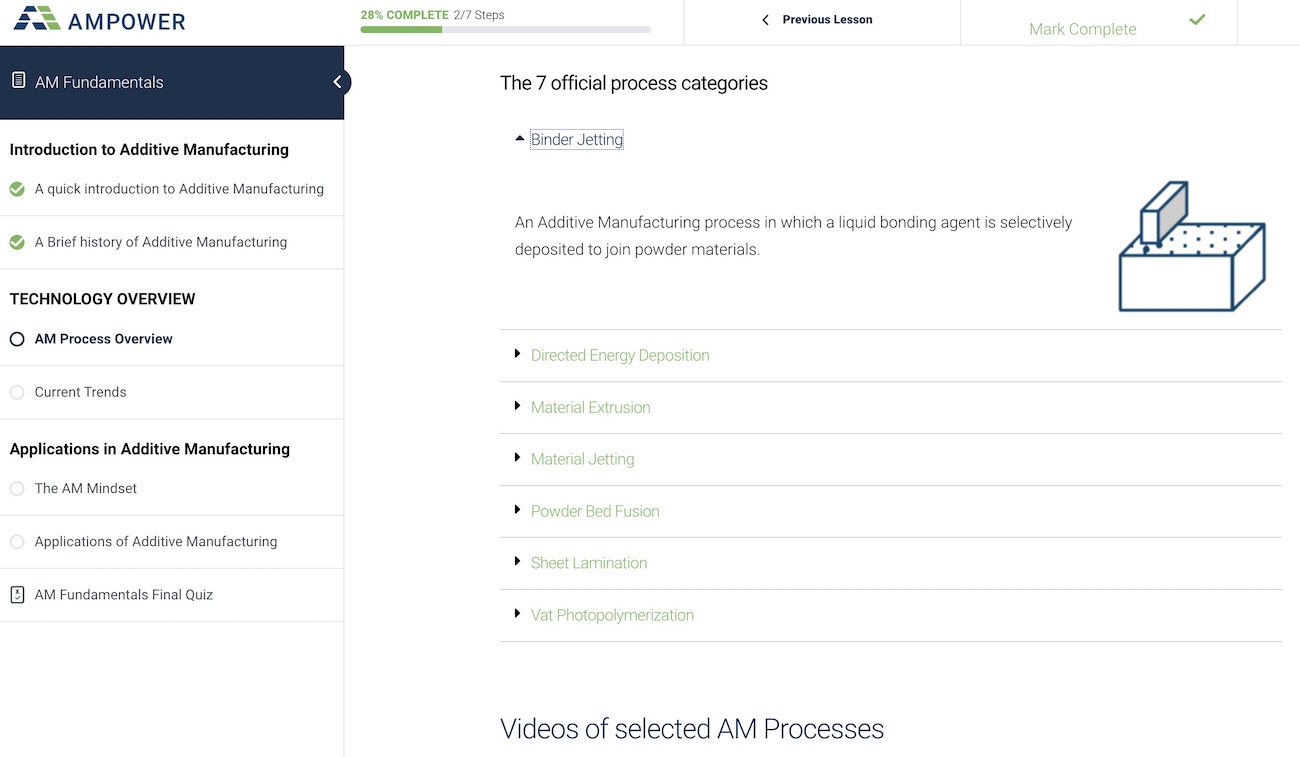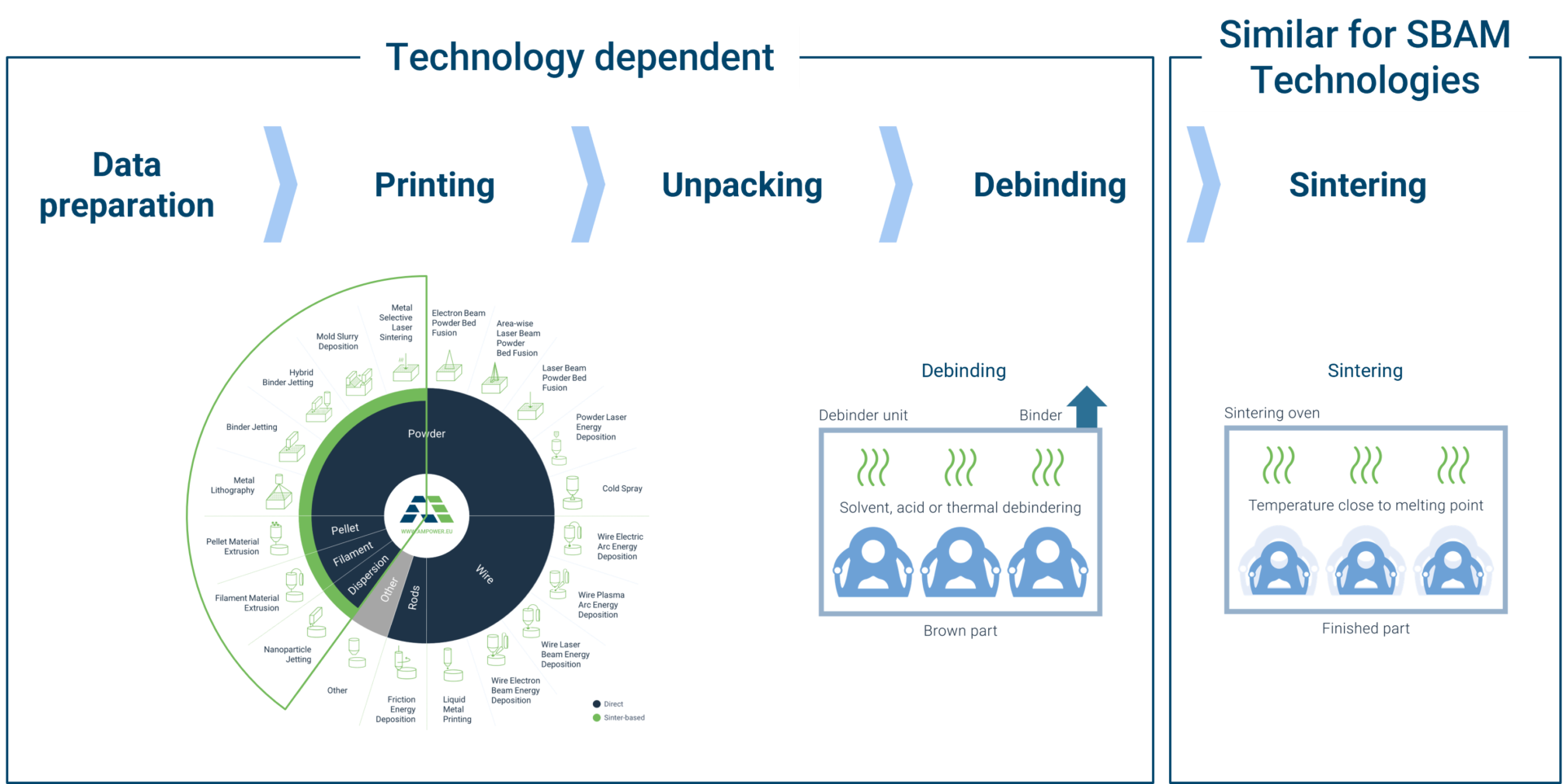AMPOWER Academy
Additive
Manufacturing
Training
The independent Additive Manufacturing training program powered by AMPOWER

Additive Manufacturing Training
Self-paced online learning programs and hands-on live trainings
Online learning programs
Live trainings

wHY AMPOWER ACADEMY
Good reasons for the AMPOWER Academy
The authors combine over 50 years of experience in Additive Manufacturing training as well as over 300 international customer projects and trained more than 500 managers and engineers worldwide. The online learning program is the first of its kind that combines self-made videos with best-in-class content. The focus is on industrial Additive Manufacturing and covers all technologies and industries.
- over 5 hours of video content
- broad coverage of all relevent technologies
- Further readings and downloads for each course
- Focus on industrial usage and hands-on tips
- Complete independence and transparency
- Reliable content with regular updates
Quick Access to our Additive Manufacturing Trainings
Dive into one of our online learning programs
What is included in our Additive Manufacturing trainings

Technologies
Broad coverage of all relevant technologies
The courses focus on the most important metal and polymer technologies such as Laser Powder Bed Fusion and Metal Binder Jetting. Upcoming technologies are constantly evaluated and will be added to the different courses once they have reached a certain maturity in order to ensure that each Additive Manufacturing training stays up to date. For each technology, the working principle, typical characteristics and materials are presented together with leading suppliers.
Applications
Typical applications from different industries
Our online learning programs and live trainings include a wide range of application examples from different industries such as mechanical engineering, aerospace and the energy sector. Each case studies includes background information regarding the technology, materials and companies involved.


Guidelines
Actionable advice you can apply to your situation
Our Additive Manufacturing trainings contain guidelines you can apply in your company such as typical characteristics of the most common technologies or the part identification methodology. Additionally, you can apply the methodologies from the online learning programs during a live course.
Get Access to our Additive Manufacturing trainings
You can access the online learning programs as individual users, teams or entire companies. Get access by selecting one of our plans.



